Archived Blog Posts
Tackling Roof Leaks: A Comprehensive Guide to Cleaning and Repairing a Leaking Roof
7/10/2023 (Permalink)
A leaking roof can be a homeowner's nightmare, causing damage to the interior of a house and potentially compromising its structural integrity. When faced with a roof leak, it's essential to act swiftly and efficiently to minimize the damage and restore the integrity of your home. In this blog post, we will provide a step-by-step guide on how to clean up a leaking roof, ensuring a thorough and effective recovery process.
Ensure Safety First
Before starting any cleanup efforts, prioritize your safety. If there is water pooling or if the leak has caused a significant structural compromise, consider evacuating the affected area and contacting a professional roofer to assess the situation.
Identify the Source of the Leak
Locate the exact point where the water is entering the building. It may not always be directly above the visible signs of the leak, as water can travel along internal structures. Inspect the roof and look for missing shingles, damaged flashing, or any other potential causes of the leak.
Contain and Remove Standing Water
If there is standing water on your roof or in the affected area, use buckets, mops, or wet/dry vacuums to remove as much water as possible. It's crucial to prevent further water damage to the interior of your home.
Dry and Dehumidify
Use fans, dehumidifiers, or open windows to facilitate airflow and speed up the drying process. Remove any wet or damaged materials from the affected area, such as insulation, drywall, or carpeting, to prevent mold growth and further damage.
Repair the Roof
Once the area is dry, it's time to address the underlying cause of the leak. Depending on the issue, you may need to replace damaged shingles, repair flashing, or seal any cracks or gaps in the roof. If you're unsure about the repair process, it's advisable to consult a professional roofer for expert assistance.
Check for Interior Damage
Inspect the interior of your home for any signs of water damage. Look for water stains, peeling paint, or sagging ceilings. If necessary, repair or replace damaged materials to restore the aesthetics and structural integrity of your home.
Take Preventive Measures
To minimize the risk of future leaks, consider implementing preventive measures such as regular roof inspections, gutter cleaning, and addressing any potential issues promptly. It's also advisable to maintain good attic ventilation and insulation to prevent condensation and moisture buildup.
Dealing with a leaking roof requires a prompt and systematic approach to prevent further damage and restore the affected area. By following the step-by-step guide outlined in this blog post, you can effectively clean up a leaking roof, identify the source of the leak, repair the roof, and address any interior damage. Remember, safety should always be a priority, and if you're unsure or uncomfortable with any aspect of the cleanup or repair process, it's best to seek professional assistance. With proper cleanup and maintenance, you can protect your home from the perils of a leaking roof and ensure a secure and comfortable living environment.
Air Purifiers and Mold: Can They Really Help?
5/7/2023 (Permalink)
Mold is a common problem in homes and businesses, and can cause damage to property if left untreated. While there are many methods for removing mold, such as cleaning and dehumidifying, some people wonder if air purifiers can help as well. In this blog, we will explore whether or not air purifiers are effective at removing mold particles from the air.
How Mold Spreads Through the Air
Mold reproduces by releasing tiny spores into the air, which can spread throughout a building and land on surfaces where they can grow and multiply. These spores can also trigger allergies or cause respiratory problems in some people. When mold is disturbed, such as during cleaning or remediation, these spores can become airborne and spread even more.
What are Air Purifiers?
Air purifiers are devices designed to improve indoor air quality by removing pollutants from the air. They work by drawing air through a filter, which captures particles such as dust, pollen, and pet dander. Some air purifiers also use technology such as UV-C light or ionizers to kill bacteria and viruses in the air.
Types of Air Purifiers
There are several types of air purifiers available on the market. The most common type is a HEPA (High Efficiency Particulate Air) filter, which captures particles as small as 0.3 microns. Another type is an activated carbon filter, which removes odors and chemicals from the air. Some air purifiers also use a combination of these filters, as well as additional technology such as UV-C light or ionizers.
Do Air Purifiers Help with Mold?
While air purifiers can be effective at removing many types of pollutants from the air, including mold spores, they are not a complete solution for mold remediation. Air purifiers can help to improve indoor air quality and reduce the spread of mold spores, but they cannot eliminate mold completely. If you suspect mold in your home or business, it is important to address the source of the problem and take appropriate remediation measures, such as cleaning and dehumidifying.
However, air purifiers can be a useful tool in conjunction with other mold remediation methods. For example, using an air purifier in a room where mold is present can help to capture and remove mold spores from the air while the mold is being cleaned. It is important to choose an air purifier with a HEPA filter to ensure it can capture mold spores.
While air purifiers can help to improve indoor air quality and remove mold spores from the air, they are not a substitute for proper mold remediation. If you suspect mold in your home or business, it is important to address the source of the problem and take appropriate measures to remove it. However, using an air purifier in conjunction with other mold remediation methods can help to improve indoor air quality and reduce the spread of mold spores. When choosing an air purifier, be sure to select one with a HEPA filter to ensure it can capture mold spores.
Why You Should Choose SERVPRO of West Mecklenburg County for Fire Damage Mitigation and Reconstruction
4/20/2023 (Permalink)
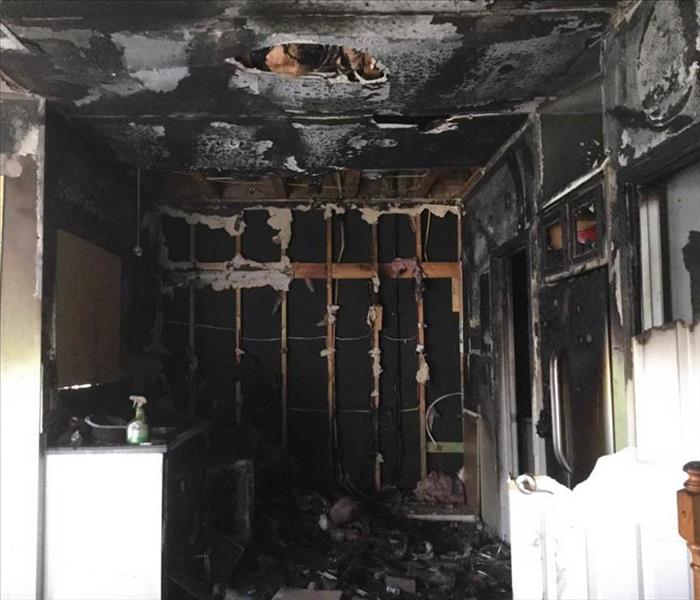 ERVPRO can help ease the burden by providing assistance with insurance claims.
ERVPRO can help ease the burden by providing assistance with insurance claims.
Experiencing a fire in your home or business can be a traumatic event. Once the flames have been extinguished, the damage left behind can be overwhelming. It is essential to work with a trusted restoration company to mitigate the damage and begin the process of reconstruction. SERVPRO of West Mecklenburg County is a leader in the industry and can provide the expertise and resources needed to get your property back to its pre-fire condition. Here are some reasons why you should choose our SERVPRO team for fire damage mitigation and reconstruction:
24/7 Emergency Response
Fires can happen at any time, day or night. SERVPRO understands the urgency of the situation and offers 24/7 emergency response services. Their team of experts can arrive on-site quickly to assess the damage and begin the mitigation process.
Experience and Expertise
SERVPRO of West Mecklenburg County has been in the restoration industry for many years and has a team of highly trained professionals who specialize in fire damage mitigation and reconstruction. They have the knowledge and expertise to handle even the most complex situations, ensuring that your property is restored to its pre-fire condition.
State-of-the-Art Equipment
SERVPRO utilizes state-of-the-art equipment to clean up and mitigate fire damage. Their equipment includes air scrubbers, dehumidifiers, and industrial-grade cleaners, among others. This advanced equipment enables them to remove smoke and soot particles, deodorize the property, and prevent further damage from occurring.
Comprehensive Services
SERVPRO provides comprehensive services for fire damage mitigation and reconstruction. They can handle everything from boarding up the property and removing debris to cleaning and restoring the property's contents. They also offer reconstruction services, so you don't have to work with multiple contractors to get your property back to its pre-fire condition.
Insurance Claims Assistance
Dealing with insurance companies can be a daunting task, especially after a traumatic event like a fire. SERVPRO can help ease the burden by providing assistance with insurance claims. They can work with your insurance company to ensure that the claims process is smooth and that you receive the coverage you are entitled to.
In conclusion, experiencing a fire in your home or business can be a stressful and overwhelming event. However, working with a trusted restoration company like SERVPRO of West Mecklenburg County can help ease the burden and ensure that your property is restored to its pre-fire condition. With their 24/7 emergency response, experience and expertise, state-of-the-art equipment, comprehensive services, and insurance claims assistance, SERVPRO of West Mecklenburg County is an excellent choice for fire damage mitigation and reconstruction.
How To Repair Important Documents After Water Damage
3/20/2023 (Permalink)
If you've ever had a home or business with water damage, then you know that it's not an uncommon problem. Water can cause a lot of damage to your building and belongings. It can also ruin important documents and photos, but luckily there are ways to repair them.
What is Document Restoration?
Document restoration is the process of salvaging damaged documents. The damage could be caused by water, fire, or smoke, but whatever the cause it's important to restore your documents as soon as you can so that they can be used again.
If you have suffered from water damage there are many steps you can take to restore your valuable information before it becomes irreparable and lost forever. There are three main techniques used during content restoration: vacuum freeze, gamma irradiation, and digitization services.
Vacuum Freeze
Vacuum freeze is a powerful drying technique used in content restoration. It is the only technique that is approved by National Archives and Records Administration (NARA) and the General Services Administration (GSA).
Vacuum freeze works by freezing the document and removing any moisture through a high-pressure vacuum chamber. In this chamber, the moisture is converted into vapor. In the right conditions, the condensation will turn into ice inside the chamber, removing the moisture from the document in question.
Gamma Irradiation
Gamma irradiation is a method of disinfection that can be used to treat documents, photos, books, and other paper products that have been damaged by water and sewage damage. This process involves safely exposing the object to radiation to kill any bacteria and viruses that might be present after a water loss.
Digitization Services
Digitization services are used to convert paper documents into digital files. Digitization can also be used to convert photographs and other printed materials into digital files, which can then be stored on a hard drive or flash drive. The use of digitization services is particularly useful if you have large amounts of paper documents that need to be converted into digital copies.
Who Can Help With Document Restoration?
If you're looking for a professional to help with document restoration, SERVPRO of West Mecklenburg County can assist. As a trusted leader in the restoration industry, SERVPRO has the training, expertise, and equipment necessary to get your documents back in shape quickly.
Document restoration refers to the process of preserving damaged documents. In this article, we discussed the different techniques used by experts in their work and how they can help you recover your important documents after water damage. If you have any questions or need help with restoring your documents, please contact our SERVPRO of West Mecklenburg County team today!
Stay Prepared for A Water Damage Emergency
3/7/2023 (Permalink)
Water damage emergencies can happen at any time, and they can be costly to fix. However, there are many things that you can do to prepare yourself for these emergencies. Water damage is not only a threat to your home and property, but also to your family’s health and well-being.
Plumbing
You can't just assume that your pipes are in good working order. Plumbing is a complex system, and it's easy for things to go wrong without you noticing. So check for leaks regularly, especially if you've had plumbing issues in the past. Check for leaks under your kitchen sink or bathroom vanity by placing a bowl of water overnight on the floor underneath where the pipe enters into the wall.
If you suspect any plumbing problems, schedule for an inspection from a plumber so they can catch any problems before they get serious enough to cause damage to your home or property.
Roofing
In addition to checking your roof regularly for signs of damage, leaks, and mold—which can lead to water damage—you should also look for any other signs that something might be wrong with your roofing system. For example, if you notice a heavy accumulation of snow on top of your roof during the winter months or hear loud noises coming from it when there is no wind, this could indicate that there's been some kind of damage that needs attention. Similarly, if you see any discoloration in areas where there was previously no discoloration (or vice versa), then this may indicate a leak has occurred somewhere in the system.
Additionally, you'll want to keep an eye out for any cracks or holes in shingles or flashing around chimneys and vents as well as any sagging shingle ends which could indicate problems with either the nails holding them down or the wooden structure underneath them
Tree and Scrubs
Trim trees and shrubs regularly. The shorter you keep them, the less damage to your home or property they can cause if they fall in a storm.
Water Detector
Another way to prepare for a water damage emergency is by investing in a water detector. Water detectors can be installed in the basement, garage and other areas of your home or business that are prone to leaks. They can detect leaks in the walls and floors, as well as ceiling leaks. In most cases, these devices will send you an alert when there is any moisture present so that you can take immediate action before it becomes a major problem.
Adequate Insurance
In order to be prepared for a water damage emergency, it is important that you have adequate insurance coverage. Insurance can help you recover from a water damage emergency more quickly, as well as help with the financial loss incurred during such an emergency.
If you do not have insurance coverage on your home or business, it is highly recommended that you obtain proper insurance prior to any major events that may cause extensive damage or loss of property. The last thing anyone wants is to be stuck with the bill after something happens!
Disaster Plan
It is important to have a plan for what to do in case of a water damage emergency. You don't want to be caught off guard and unprepared. Here are some steps that can help you create your plan:
- Know how to turn off water valves around the house and outside
- Know where all of your fire extinguishers are located (and how many there are)
- Make sure all smoke detectors—including those in kitchens and garages—are working properly, with new batteries installed if necessary
- Review your insurance policy and list all items covered by it in case of loss or damage caused by flooding from burst pipes or other sources of water supply disruption.
We hope these tips have been helpful for you in your preparations for water damage emergencies. If you’re still not sure what to do, seek help from a professional in water damage restoration.
How Do I Know I Have Mold Damage?
1/17/2023 (Permalink)
You've been noticing some strange things happening in your Brookhill, NC home, and you think it might be mold. You need to take action now if you want to keep your home safe from the dangers of this fungus. Here are some signs that will help you determine if there is a mold problem in your home.
Visible Mold Growth
Mold is often black, brown, or green in color. It can grow on almost any surface and is usually visible if you know what to look for. Mold may be found anywhere in your home including: showers and tubs, kitchens, basements, and laundry rooms.
Mold spores are microscopic and float around in the air all the time. They can be transported into your home on clothing, shoes or pets’ fur as well as by wind currents that carry them through open windows or doors. Once inside they can grow on just about any damp surface such as wood paneling or carpeting if it has been wet long enough for mold spores to begin growing.
Water Stains
Even if you're not sure what to look for, you can tell if there's a problem with mold or mildew by looking at the walls. If they have water stains, that means there has been some water damage in your home. And even though these stains may be small and inconspicuous, they could indicate an underlying problem with mold growth.
If you do see evidence of mold on your walls or ceiling, it's best to act quickly before the mold spreads and causes more damage. This is especially important if you live in areas where the weather gets very hot during the summer months—mold loves the heat!
Discoloration on Walls
Mold can cause discoloration on walls, and it can also happen on other surfaces as well. In fact, mold can cause discoloration to a wide range of materials—including wood, drywall, and even paint. If you see any signs of mold growth in your home, then it's time to call in an expert.
Mold Test to be Sure
Mold can be hard to detect, especially if you don't know what you're looking for. You might think that the black spots on your wall are just dirt or maybe water stains from a leaky pipe. However, these could actually be signs of mold infestation! The only way to know for sure is by testing for it—but how?
You can test for mold with a mold inspection kit, which you can purchase online or at home improvement stores like Home Depot. Each kit will include everything needed to take samples from different areas throughout your home, including swabs and Petri dishes that can be used to send off samples for testing in a lab. Once the results come back from the lab, this information can help guide decisions about how best to deal with the problem before more serious issues arise down the line.
Mold can be dangerous to your home. If you suspect that you have a mold problem, do not try to fix it yourself. Contact SERVPRO of West Mecklenburg County immediately so we can evaluate the situation and determine the next steps to take.
The Most Vulnerable Areas of Your Home
12/19/2022 (Permalink)
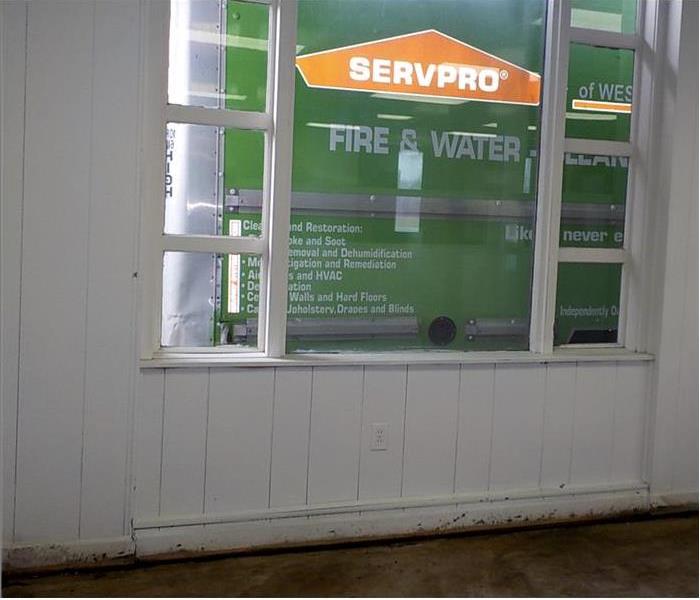 Call SERVPRO of West Mecklenburg if you need storm damage restoration in your home!
Call SERVPRO of West Mecklenburg if you need storm damage restoration in your home!
The Most Vulnerable Areas of Your Home
During a storm, your Brookhill, NC home is not only at risk of damage to the outside structure but also to the inside. The most common areas that can be damaged from high winds or flooding are around doors and windows, roofs, decks and patios. These are all things you can fortify with some quick fixes before the next big storm hits!
Roofs
Roofs are the most vulnerable part of your home, being exposed to all the elements. Roofing materials like asphalt shingles also offer protection, but you may need to take additional measures to make sure your home is safe during a storm. Guttering can act as an extra barrier against high winds that could blow debris onto your roof and tear off shingles or laminate sheets.
Windows
Windows are often the first part of a house to be hit by a storm. Because of this, they can be reinforced with storm shutters or other reinforcements to help protect them from damage. However, even with these measures taken, windows remain one of the weakest points in a structure's overall structure.
If you're worried about your windows and don't want to do any work on them yourself, there are companies that specialize in window fortification who will come out and do it for you quickly and efficiently.
Doors
If you’re like most people, you probably aren’t thinking about your doors as the most vulnerable part of your home as a storm approaches. However, they are; doors are easily damaged and offer little protection in the case of a strong storm. The best way to avoid serious damage is to reinforce or replace existing doors with steel frames and deadbolts or add a storm door to protect against winds.
While reinforcing existing door frames with steel rod or other material is relatively inexpensive, replacing them entirely can be expensive depending on which type of door is used. Storm doors cost between $100-$200 depending on size but may be worth considering if they offer enough protection from wind damage that could otherwise cause significant damage inside the house.
Deck and Patio
If you're looking to protect your home during a storm, one of the most important things to consider is the deck and patio. These areas are often overlooked by homeowners because they're not as obvious or visible as a garage door or roofline.
However, decks can be very vulnerable in strong winds and even minor storms.
Check for build quality. If your deck was built with cheap materials or poorly assembled, it may not withstand strong winds at all. You should also check for loose or missing boards on the deck itself; if these have been stripped off by high winds in past storms then there's a good chance that future storms could cause damage as well.
Be sure to check screws and bolts for rusting or cracking; if these are worn out then it could mean trouble for your deck in an upcoming storm season!
Preventing Damage
There are a few ways you can fortify these vulnerable areas to prevent post-storm damage. Some of these steps may seem like common sense, but they can make all the difference when it comes to protecting your home:
- Install storm windows and doors. If you have older windows or doors that aren't as strong as they used to be, now is the time to replace them with ones that are more resistant to wind gusts and high winds. Not only will this help keep your home safer from the elements, but it will also save you money down the road on air conditioning bills during hot summer months!
- Get an awning for your front porch. An awning is just what it sounds like—a canopy overhanging from a building's facade that gives shade from both direct sunlight and rainwater (and sometimes even snow!). By installing one, not only do you get extra protection against bad weather conditions; but also it adds curb appeal too!
- Install shutters on any windows where sunlight would come through normally without being blocked by something else first (such as curtains) so nothing gets trapped inside when moving objects around happens outside due to heavy winds blowing through town right after sunset tonight."
The most important thing to do is prepare before the storm arrives. If a storm is heading towards your Charlotte home, prepare as much as possible ahead of time, and call SERVPRO of West Mecklenburg if you need storm damage restoration in your home!
Water in the Crawl Space
11/6/2022 (Permalink)
Water in the Crawl Space
One of the best ways to protect your Berryhill, NC home from moisture is to make sure that it's properly ventilated. Water in the crawl space can cause significant damage to your home. The moisture causes mold and mildew to grow, which could lead to structural problems. It can also cause electrical issues, foundation problems, and even structural damage. But what if there's already a lot of moisture in your crawl space? How do you fix that? The answer depends on the source of your problem and whether or not it can be remedied.
Sources for Water in the Crawl Space
There are a number of sources that can introduce water into your crawl space.
- Your home's sump pump: Most homes have a sump pump installed to collect water that enters the foundation through basement windows and doors. If this pump malfunctions, it can allow water to back up into your home's crawl space, creating moisture problems in addition to flooding.
- A leaky pipe: Leaky pipes in your walls or flooring can also cause water damage in your crawl space by leaking down through the walls and into the dirt flooring below it. This can result in mold growth as well as other types of contamination if you don't fix it quickly enough.
- Rainwater: Some homes have drainage systems that direct all rainwater away from their foundations instead of having them keep it inside like many older houses do today—and those drainage systems may leak if they aren't maintained properly over time! This can result in excess moisture levels below ground level where no one wants them! Also, note that some areas get more rainfall than others; so even if yours doesn't seem like an area prone to average precipitation still take care not to let too much go unnoticed when considering this factor.
Inviting Critters into Your Crawl Space
Critters of all kinds like to live in damp places such as the crawl space, so it's no wonder that you might find ants, woodlice, spiders, and even mice in your crawl space. In fact, the sight of a mouse can terrify you enough to want them all gone immediately.
While these critters may not be harmful to people themselves (with the exception of some spiders), their presence inside your home can cause damage by chewing through wires and cables as they go about their business. It's important to get rid of them before they do any damage because repairing broken cables can be expensive!
Structural Issues
There are some structural issues that could occur when water sits in your crawl space:
- Wood rot. The wood framing and floor joists in your home will begin to deteriorate after they are exposed to standing water and high humidity levels for an extended period of time. This type of damage is most common in basements and unexcavated foundations, but it can also occur in crawl spaces with poor ventilation. As this happens, structural integrity decreases and your home becomes less stable over time.
- Concrete cracking or crumbling away from the wall due to moisture entering through cracks or other defects in the foundation wall itself (such as pipes that have leaked through).
- Bricks or stone crumbling away from a masonry foundation due to repeated cycles of wetting and drying—particularly if there are gaps around pipes or plumbing vents where moisture may be able to enter at ground level before reaching higher up into your wall cavity where it would otherwise dry out as soon as it got inside (if not before).
Sump Pumps
A sump pump is the most common method used to pump out excess water and can be installed in your crawl space or outside of it. They come in different sizes, depending on the size of your crawl space. If you have a large crawl space with multiple feet of moisture buildup, you may need one that operates on larger amounts of water at once so that it doesn't clog up with debris.
A sump pump consists of a motor (that turns), an impeller (that spins), a housing (that contains these parts), and a float switch (that senses when there's too much water). When this happens, the float switch shuts off power until there isn't any more excess moisture present--and then automatically turns on again when conditions return to normal levels.
Dry Wells
If you’re not familiar with dry wells, they are underground structures that capture water from your crawl space and funnel it away from the property. This is an important step in mitigating water intrusion into your home.
There are many reasons why a dry well is necessary:
- Sump pumps may not be able to empty rainwater into a storm drain fast enough.
- Dry wells allow sump pumps to work more efficiently by keeping them free of standing water so they don't lose suction power when this happens.
- Dry wells prevent flooding in basements or other areas of your home where you don't want excess moisture collecting near foundations (or anything else).
Water in the crawl space may be an indication that you need to install a sump pump. When you have a water damage event in your home or business, it's always a good idea to give SERVPRO of West Mecklenburg a call! We will get your West Mecklenburg property back to its preloss condition quickly.
But What About Smoke Damage and the Odor After a Fire?
10/2/2022 (Permalink)
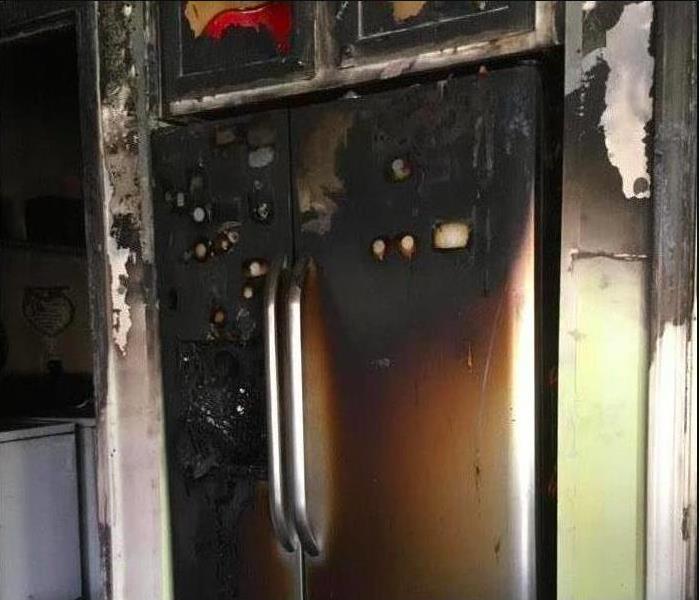 Give SERVPRO of West Mecklenburg for any fire damage in your Charlotte, North Carolina home or business!
Give SERVPRO of West Mecklenburg for any fire damage in your Charlotte, North Carolina home or business!
But What About Smoke Damage and the Odor After a Fire?
If you've experienced a fire, then you know how devastating it can be. However, what do you do if the smoke damage to your home is not immediately apparent? Or worse yet, what if there's damage to your personal belongings that get covered up by smoke and odors?
Structural Damage is Obvious
When there is structural damage to your home following a fire, it's pretty obvious. You can see the smoke damage on your walls and ceiling and on your furniture. Smoke damage is also called soot or charring.
When a home is exposed to excess heat, the resulting smoke can cause interior walls and ceilings to discolor and warp into irregular shapes. The wooden studs in the wall may swell up enough that they no longer line up with each other properly, creating large gaps between them where water can leak into the drywall behind them and start mold growth. The same thing happens when windows expand due to high temperatures—the seal around them breaks down, allowing moisture inside where it can cause more problems (like rain leaking through broken glass).
Smoke Odor and Damage are Not as Obvious
Not all fire damages are structural. Smoke damage can quickly destroy your personal property, especially if you don’t act quickly to mitigate the smell and damage done by smoke.
There are many ways that smoke can affect your belongings and cause permanent damage:
- Smoke destroys furniture by staining it and making it smell like smoke. If you want to sell a piece of furniture that has been exposed to a fire, but doesn’t necessarily have structural issues (like missing legs), then you need to clean it thoroughly first in order to get rid of any lingering odors.
- Smoke damages carpets and upholstery because they absorb the chemicals that come out of burning materials such as wood or clothing fabrics. If you don’t clean these items properly with professional equipment immediately after an incident occurs, there will be permanent discoloration as well as residual odor problems down the road when people sit on them or walk over them repeatedly over time
How does smoke cause odor in the first place?
There are many reasons why your home may smell like smoke after a fire. Some of these smells come from materials that were damaged by heat, while others are caused by chemicals released during combustion. Here are some examples of how smoke can cause an odor problem in your home:
Burnt Food
If you have a kitchen fire, the burnt food will release unpleasant odors into the air and onto surfaces throughout your house. Even if you don't have any ruined food items on hand when this happens, you can still get some lingering smells from them later on—like if someone else cooks something similar or if there's already grease buildup in your oven that hasn't been cleaned out yet. This is especially problematic for people who love making homemade meals with lots of spices or herbs—these flavors can become pungent over time and linger long after being cooked out!
Burnt Electrical/Plastic Parts
Aside from burning foods such as meatballs or tortillas (which do not contain any plastic components), there are other things that may catch fire due to electrical malfunctions within their circuitry - including TVs/gaming systems/phones etc.) which means those kinds of products release toxic fumes into homes when they're left plugged in for too long without proper care taken beforehand (such as changing batteries frequently). And since most people aren't aware of these kinds of hazards until after something bad happens, it’s best practice not to leave any kind of electronic device running overnight unless absolutely necessary!
Cleaning and Restoring After Fire
If you have had a fire in your home or business, you should contact a cleaning service as soon as possible to attempt to minimize the effects of smoke odors and other contaminants on your property.
The first step in cleaning up after a fire is to use a vacuum cleaner to clean up any soot and dust in the affected areas. You may also want to wash walls, ceilings and floors with a solution of water and cleaning detergent before drying them thoroughly with towels or fans. If there are stubborn stains left behind by soot particles, try using an ozone machine or thermal fogger (a machine that sprays heat-treated water vapor) to eliminate these stains; however, keep in mind that some types of flooring may be damaged by extreme temperatures like this one. Finally, use an air filtration device such as an ionizer (which removes odor particles from the air) after removing all visible signs of smoke damage for best results during reconstruction efforts later down the road!
Cleaning up after a fire is no fun, but it’s important to remember that there are many steps you can take. It’s not just about what products or methods you use to clean up the mess; it’s also about how you handle yourself in this stressful situation. Take care of yourself and your family members so that everyone stays healthy during this time. Don’t forget that there are professionals out there who can help make things easier for everyone involved! Give SERVPRO of West Mecklenburg for any fire damage in your Charlotte, North Carolina home or business!
Where To Safely Put Your Space Heater
8/27/2022 (Permalink)
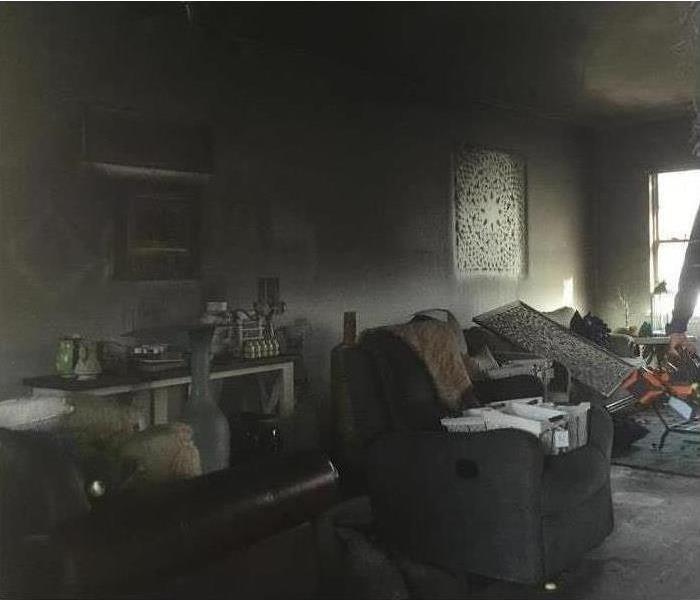 Fire damage in a living room.
Fire damage in a living room.
Ways To Avoid A Burned Space Heater
If you are like many people, then you probably use a space heater to stay comfortable when the temperatures drop in Pineville, NC. As convenient as these little heat blasters may be, though, a burned space heater can also be deadly. Every year, approximately, 25,000 residential fires start because of them.
While there are several ways you can reduce the risk of this kind of fire damage, one of the top things to consider is where you put the heater. To lower the chances of needing a smoke cleanup team the next time you try to warm up your house in the morning, try one of these locations instead of the bed or the carpet.
In the Bathroom
While bathrooms often do not have carpeting, you still need to consider flammable furnishings such as:
- Rugs
- Window curtains
- Shower curtains
- Towels
When you are using your heater in the bathroom, make sure it stays on the tile and away from any cloth or paper that may be nearby.
In the Bedroom
When it comes to the bedroom, there are probably more opportunities for a burned space heater to occur. If you have carpet, you should reconsider putting your heater in a bedroom at all. Not only does this device need to stay on the floor, but it should only be placed on a hard surface like wood, tile or laminate. Because it is unsafe to sleep while a space heater is on anyway, keeping it away from your resting place is probably a good idea.
In the Living Room
The living room is another location where you can find a lot of potential fire starters, yet it is also a common space for families to gather. If you want to heat up this area of your home, look for a suitable place to set the heater. If you have a fireplace area or another part of the room with solid flooring, that should be the spot.
There are many ways to avoid a burned space heater. Knowing where to put it is one of the simplest and most effective.
4 Ways To Protect Your Commercial Property from Hidden Water Damage and Mold Growth
8/22/2022 (Permalink)
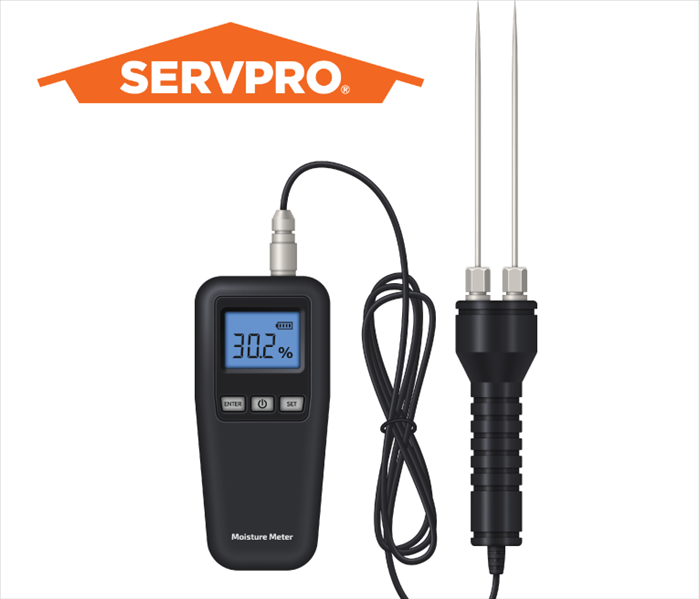 Keeping an eye out for unhealthy amounts of moisture can go a long way in preventing mold growth
Keeping an eye out for unhealthy amounts of moisture can go a long way in preventing mold growth
4 Ways To Protect Your Commercial Property from Hidden Water Damage and Mold Growth
Water: It's the most powerful force on earth and the foundation of every living thing. That force can wreak havoc in myriad ways, including mold growth, although not all water damage is immediately obvious. If you are a business owner or have a commercial property in Charlotte, NC, there are four ways you can protect yourself, your employees, and your building from hidden water and mold damage.
1. Immediately Address Unwanted Water
This goes without saying, but if your space floods, make sure to dry everything out thoroughly and properly ventilate the space with fans and open windows. Consult with a water and mold remediation specialist that can help you identify potential issues and problem areas.
2. Inspect Your Property for Signs of Moisture
Check for condensation on your walls, pipes and windows; notice whether any areas smell damp or musty. These are all potential signs of water damage. Make sure there are no leaks in your roof or the flashing surrounding your A/C units, and rule out water seepage around the foundation. The EPA recommends checking corner rooms with walls that get exterior exposure. Depending on your climate, insulating either the inside or outside walls will help.
3. Purchase a Moisture Meter
Keeping an eye out for unhealthy amounts of moisture can go a long way in preventing mold growth. A dehumidifier, properly sized for your space, can help keep those levels in check.
4. Have Your Property Assessed Professionally
Water and mold remediation specialists are experts at spotting the signs of hidden mold, knowing how to address it, and fixing it safely. If you have any doubts or concerns that unhealthy levels of mold might be present, call in the professionals to address your mold prevention concerns.
Taking precautionary measures to prevent mold from known or hidden water damage will pay off in the long run by getting you back to business as usual as quickly as possible after unwanted water. It will also give you peace of mind, which is priceless in and of itself.
3 Causes of Basement Floods
8/17/2022 (Permalink)
What Are The Most Common Causes Of Flooding
Basement flooding in Collingwood, NC, needs to be dealt with right away or else the consequences can have far-reaching effects. It often begins as a small, deceptively benign problem until it grows into an expensive home improvement project. Therefore, to prevent a basement flood, it is best to respond to the first signs of water damage. It is important to know what are the most common causes of flooding.
1. Blocked Gutters and Debris
One thing that can cause a basement flood is when a gutter connecting your house to the sewer system becomes blocked. It is important to know when this happens and to contact the city as soon as possible because the water levels can rise quickly, causing damage rapidly. If your property stays flooded for too long it can disrupt the foundation of your home
The troughs along your roof collect debris — leaves, dirt, and animal byproducts — that can allow water to spill over, landing beside the basement. This can create leaks in the basement, but it is easily fixed. Simply clean out the gutters and judge whether a larger size is more appropriate for where you live.
2. Poor Sealing on the Floors and Walls
One thing to keep an eye out for is if the basement floors and walls are flooded or damp after wet weather. In some cases the floor tiles and the walls have not been sealed properly; this can let the water soak in. If you notice this, it would be worth having the seal checked and fixing it, if necessary.
3. Inappropriate Site Location
Often the cause of a basement flood is due to choosing a poor location on the site for the foundation. Residential properties are typically built on sloped land so that the water can drain away from the house. In some instances, houses are built on the lower point of a property, which can cause flooding.
Water damage can become severe if the problem isn't dealt with. Before you have to call in restoration experts, keep an eye on your basement and watch for these common causes of flooding.
How to Remove Post-Flood Odors
7/28/2022 (Permalink)
 Make sure your odor removal involves the assistance of experienced storm cleanup professionals.
Make sure your odor removal involves the assistance of experienced storm cleanup professionals.
Three Steps To Deodorize Your Property
If you have recently experienced flood water-related odor issues at your Arbor Glen, NC, business, you are not alone. Many commercial property owners have suffered due to odors caused by mold growth, sewage loss, and other side effects of water buildup.
Fortunately, there are a few things that you can do to get the issue cleared up and get your business back to smelling like it did before the storm. Get started by learning about these three steps to deodorizing your property.
1. Call Professionals
No matter what is causing the stench in your building, it is important to make sure your odor removal involves the assistance of experienced storm cleanup professionals. There can be many different reasons that your business smells the way it does, and some of the causes may be complicated. Bringing in help from people who know exactly how to handle the cleanup after a commercial flood will be very beneficial to you and your company.
2. Disinfect
Disinfection is often one of the first steps to removing foul odors from your property, especially if the odor is caused by mold growth. Trained technicians will understand that growth of this kind will continue to be the source of your odor problem unless the mold is eradicated as soon as possible. Masking the smell will only be a temporary solution, and the unpleasant aroma is almost certain to return if your building is not disinfected.
3. Deodorize
After any infection is taken care of, deodorization can take place. Professionals can use specialized equipment to remove odors and identify their sources. They may use a number of different tools and techniques to eliminate your odors once and for all, and if any new causes arise during the process, they can be addressed, as well.
Be Patient
Remember that mold growth and other similar causes of odor after flood damage in Arbor Glen, NC, can be complicated, and eradication will not always happen overnight. Trust that your building’s odor control and removal are in good hands, and with a little patience, you will soon be able to breathe easy in the workplace once more.
What To Expect With Storm Restoration
7/20/2022 (Permalink)
 The goal of a good cleanup team is to restore your building "Like it never even happened."
The goal of a good cleanup team is to restore your building "Like it never even happened."
If your commercial building has suffered damage from a major storm, you might not know what to expect in terms of cleanup, especially if this is your first time. While each storm is different, and no two situations are exactly alike, there is a general pattern that a cleanup will follow. This is true if you call a professional storm remediation company in Charlotte, NC. They will have handled disasters in the past and will be skilled in the process, whether your building is in need of a tear out or just needs to have the water removed from the premises.
The Critical First Steps
Once water enters a building, the professionals will want to remove it as quickly as possible. The longer it is present, the greater the water damage will be. Therefore, they pride themselves on being Faster to any size disaster and will begin the following steps as soon as they arrive:
- Inspection and assessment of damage
- Water removal and extraction
- Drying out the building
- Cleaning and sanitizing
Restoration
If the damage is extensive, a tear out of ruined materials will have to be performed. This is more likely if there is dirty, contaminated water or sewage present. In this case, the storm restoration process will be more complicated and may involve drywall removal and installation, painting and floor repair.
The Final Stages
The goal of a good cleanup team is to restore your building "Like it never even happened." Professional cleaning techniques include restoring furniture and belongings to good condition and removing the odors that are often associated with storm damage. Equipment such as air scrubbers and fogging machines will be used to get rid of excess moisture. They will scrub everything down with antimicrobial disinfectants and make sure the building is deodorized. If a tear out is needed, the team will dispose of all items until your commercial building is like new again.
How a Flood Cut Restores Your Home
7/13/2022 (Permalink)
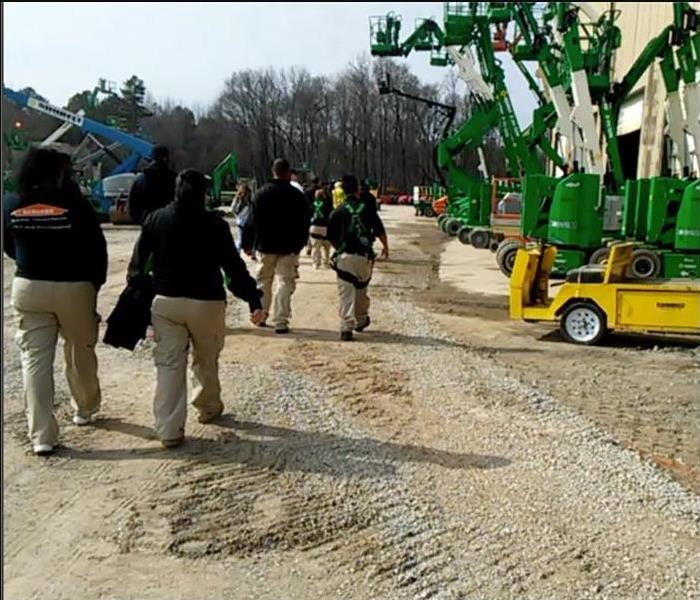 Our technicians are trained to begin your restoration process.
Our technicians are trained to begin your restoration process.
How a Flood Cut Can Help You Restore Your Home
Large storms and floods often happen without much warning and they can be devastating to a home. They are among the most common disasters to strike properties across the nation, and no area is immune. When flooding does occur to your home in Wilmore, NC, immediate action should be taken to mitigate damage. A fast response by a local storm remediation franchise that is open 24/7 365 days a year is a good start. A team of trained technicians will come to your home and begin the restoration process with a thorough inspection and assessment, followed by a vigorous and informed action plan. The team will use all available tools of restoration.
Water Removal and Extraction
With a flooding situation, prompt removal of all standing water in the home is a priority. This is accomplished with wet vacuums and is followed by drying and ventilation. In cases where drywall has been saturated, a flood cut or tear out is often necessary. This technique works in the following ways:
- Technicians identify areas of damage
- They cut out portions of the drywall
- They typically make the cut 12 inches above the flood line
- They restore the wall with new materials
The purpose of the flood cut is to remove any contamination from the floodwaters. The process usually involves removing and replacing insulation behind the wall.
Cleaning and Sanitizing
The restoration continues with a cleaning process that addresses all areas of the home affected by flooding. This includes the contents of the home such as clothes, furniture, and documents. Using specialized cleaning techniques, many items can be restored to excellent condition again. Antimicrobial cleaning agents and equipment such as air scrubbers and fogging devices provide deep cleaning to your home. A thorough job will remove lingering odors from the home. The final steps involve restoration of damaged areas to bring the home back to its original condition.
3 Ways To Restore Damaged Documents
6/22/2022 (Permalink)
3 Methods for Restoring Damaged Documents
When your business faces water damage either due to a natural disaster, plumbing mishap or another unfortunate event, many valuable papers can be destroyed. However, they don't have to be doomed from the damage. Here are three ways document restoration can be achieved should your Brookhill, NC, business be consumed by water damage.
1. Vacuum-freeze Document Drying
It's imperative that as quickly as you notice drenched documents place them upright in a freezer. This ensures that the paper won't deteriorate rapidly and also prevents the growth of mold. Once you have the affected items in a freezer, let your local SERVPRO cleaning and restoration professionals transport them to a state-of-the-art facility for vacuum freeze-drying. This trusted document restoration technique that is used in top museums is the ideal way to draw out moisture from a wet document.
2. Gamma Irradiation to Disinfect
Any contact with water or even high humidity and moisture in the air can damage paper documents. Items may have traces of mold or bacteria with the potential to grow, so it's crucial to fully disinfect the paper. This is achieved with a technique known as gamma irradiation. Restoration specialists use radiation to kill any harmful properties like viruses or pesticides and sterilize the paper.
3. Digitize Documents for Future Access
A key way for your business to retain important documents is to have digital copies of them on hand. After completing the drying and sterilizing process, restoration professionals will then produce digital copies of the documents. This gives business owners the peace of mind that they can access any documents they need without the fear of further damage in the event of another disaster.
When water ruins the condition of important paper items, rely on professional freeze-drying, gamma irradiation, and digitizing techniques to complete the document restoration process.
3 Reasons Why You Shouldn't Drive Down a Flooded Street
6/14/2022 (Permalink)
Three Reasons to Avoid Driving Down a Flooded Street
When a thunderstorm hits Berryhill, NC, the effects can be felt by more than just your battered roof or thriving garden. It can also negatively affect your commute. Despite that, it's imperative to exercise caution. Here are three reasons NOT to cross your fingers and gun it down that flooded street the next time severe weather impacts your route.
1. It Takes Less Water Than You Think To Wash Away a Car
According to the National Weather Service, just 12 inches of fast-moving water is enough to sweep away a compact car. At two feet, virtually no car, pick-up truck or SUV is immune. Even six inches of water is enough to cause your ride to stall or to make it float, which means a total loss of control for whoever is behind the wheel.
2. Your Car Is Not a Boat
Unless you're Batman, your beloved vehicle probably can't turn into watercraft at the touch of a button. Once your car does get carried away, you've ceded all control. After that, there's little to stop your car from careening onto its side or flipping over entirely — all while you continue barreling along.
3. You Don't Know What's Under the Surface of That Flooded Street
What Lies Beneath is more than just a second-tier Harrison Ford movie. It should also be one of your chief concerns as you traverse flooded roads. During flooding, entire road beds can be washed away. In other words, that street you're thinking about driving down, even though it's flooded, may not be there anymore. Those 6 inches of water may actually be 26, for example, and then it's time to refer back to the second of these travel tips.
Storm surges happen. After a flood, leave water damage repair to the pros, and leave sailing to the Navy. Your car and your wallet with thank you for exercising caution and driving past that flooded street.
Safety and Operating Tips for Your Sump Pump
6/8/2022 (Permalink)
Tips for Using and Maintaining Your Sump Pump
Any time of year has the potential for bringing water into homes, whether it is from storms or faulty plumbing systems. There are many ways to minimize the chance of flooding and its associated damage, including having a reliable sump pump on hand. As with any other device, you need to be sure the unit is ready to work when you need it the most. Also, when dealing with water and electricity, safety is paramount. Always make sure the cord is in good shape and the pump is plugged into a working ground fault circuit interrupter. This will reduce the risk of electrical shock.
Essential Pump Maintenance
Once you have taken the appropriate safety measures, you can concentrate on making sure your device is in the best condition possible. Always look the sump pump over closely before each use, checking the discharge pipe and the vent hole for clogging or obstructions. If necessary, take these actions:
- Remove any debris from the intake screen
- Test the pump by operating the device under controlled conditions
- Check to make sure the pump activates and drains water
- Replace the battery every two to three years
Pumps by different manufacturers could have additional procedures. Make sure to read the owner's manual if you have any questions.
Important Flood Precautions
If incoming water does gain the upper hand, either from outside or an inside source, be sure to respond quickly to minimize water damage. Immediately call a local water mitigation franchise that operates near your home in Charlotte, NC. The restoration company will dispatch a team of trained technicians who will arrive in a matter of hours. These workers will assess the situation and get to work on removing any standing water and drying out wet carpeting, flooring, and other items.
Unwanted water in your home should be addressed promptly. A working sump pump is an important tool to limit the impacts of floods and other water disasters.
Why Fire Cleanup Often Requires Water Cleanup
5/27/2022 (Permalink)
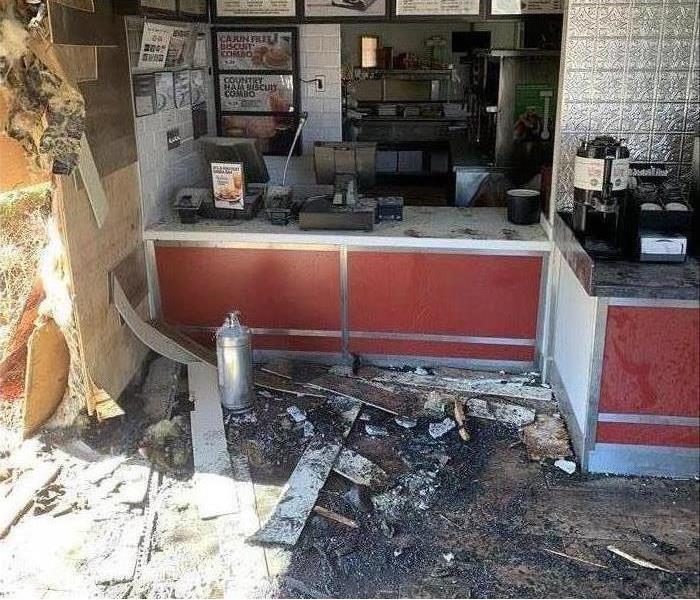 SERVPRO of West Mecklenburg County is the leader in the fire and water restoration industry. During your time or need, let us restore your property!
SERVPRO of West Mecklenburg County is the leader in the fire and water restoration industry. During your time or need, let us restore your property!
Why Does Water Cleanup Often Follow Fire Cleanup?
The aftermath of a business fire, even a relatively small one, leaves an impressive path of destruction. Some of it is invisible, such as smoke odors that penetrate walls and porous objects, while much of it is blatantly visible: blackened surfaces, sooty walls and dirty water. Though perhaps unexpected, one of the priorities after a fire is often a water cleanup. That is because either a fire sprinkler system or the actions of the fire department used gallons of water to put out the fire.
Water Removal
Any standing water should be removed as quickly as possible from the fire scene. The longer water remains in a building the more damage it can do to objects and the more likely it is to promote mold growth. A local fire restoration company in Brookhill, NC, can arrive quickly and use vacuums, blowers and dryers to remove water and other forms of moisture. Water cleanup sets the stage for the process that follows.
Smoke Cleanup
A restoration project manager oversees the cleanup process and develops a plan for what items must be cleaned, deodorized and sanitized. This highly-trained individual will determine the correct chemicals, cleaning methods and equipment to rid the building of smoke and fire odors.
Fire Cleanup
Other aspects of the cleanup process include debris removal, which is accomplished early on in the cleanup. This eliminates safety hazards, allows a clearer view of damage and provides a better environment for workers. After the cleaning of individual objects, the final stage moves on to reconstruction, where a team rebuilds any portion of the commercial building that was damaged. The ultimate goal of all services is to restore the facility to its original condition.
Water cleanup is an important part of a fire restoration project. When done professionally it prevents further damage to a commercial building.
Preparing Your Company for a Possible Fire Disaster
5/23/2022 (Permalink)
Getting Your Company Ready For A Fire Disaster
Owning a commercial property and operating a business are two of the most challenging things you can do professionally. Still, while operational issues are a struggle, you must also consider disaster preparations and responses, ensuring a contingency plan is in place to protect your investments, employees, tenants, consumers, etc. If you speak with fire remediation services in Arbor Glen, NC, they will likely explain four things you should consider, especially in preparation for potential fire disasters.
1. Evacuation Plan
During any disaster situation, the most important thing is the safe evacuation of all personnel and consumers. You should develop evacuation plans for every room and floor of your facility. Use company meetings and practice sessions to ensure that all personnel understand evacuation measures and place clear signage throughout the property.
2. Contingency or Continuity Plan
Aside from ensuring everyone evacuates the property safely and efficiently, you will want to ensure your business can maintain critical operations after a fire disaster, so you should create a contingency plan. The plan should include all vital contacts, budgets, and other issues to ensure essential personnel know who to contact and how to run limited operations during recovery.
3. Fire Suppression Sytems
It is vital that all commercial properties have working and maintained fire suppression systems. These systems ensure the safety of personnel and property. It would be best to look into the appropriate sprinkler systems and fire extinguishers for your property. Additionally, make sure there are multiple fire extinguishers located strategically throughout the property.
4. Remediation Services
While you do not have to have a remediation service on standby, it is an excellent idea. Meeting with and contracting with such services can ensure fast response times in the event of a disaster.
Making an evacuation and contingency plan is crucial to the survival of a business and the safety of its employees. However, these plans are not the only things you should create and consider.
3 Critical Steps for Cleaning Electronics After a Business Fire
5/18/2022 (Permalink)
3 Steps To Cleaning Electronics Following A Business Fire
A commercial fire cleanup is complicated enough, but when flames, smoke and soot damage electrical components, the restoration becomes even more difficult. An electrical fire requires specialty cleanup techniques that are designed for sensitive computer systems and other devices. This is true even if the fire was a short distance away, as soot and smoke can travel far from open flames.
Fine powder carbon residue wreaks havoc with electronics, shorting out circuits and coating other components. Not all is lost, though, as advanced techniques can often salvage impacted items.
1. Computer Cleanup
After a fire, it is not just the soot and smoke that impacts electronics. Fire fighting equipment from water to foams and other substances also can reach electrical systems. Therefore, the job of cleaning computers, printers and other devices after a fire requires a process that removes many harmful substances:
- Chemical residues from fire suppression
- Hydrochloric acid from smoke and chemicals
- Soot deposits
- Dust buildup
- Dirt and mud from water deposits
A trained and certified fire mitigation franchise in Collingwood, NC, will use the most advanced cleaning methods recommended by the restoration industry. Technicians will inspect all items damaged by an electrical fire and determine the best course of action, even taking some items off-site for access to additional resources.
2. HVAC Cleanup
It is not uncommon for smoke damage to impact the sensitive components of an HVAC system. A thorough duct cleaning process using the latest cleaning agents as well as manual cleaning can restore the heating and cooling system.
3. Electric Appliances
Individuals should not attempt to clean washers and dryers, microwaves and other electric appliances after a fire. An authorized repair service is the best source for restoring these units damaged by the impacts of fire.
An electrical fire that damages sensitive systems might seem dire at first glance. However, trained technicians can restore some devices with specialized cleaning methods.
How To Flush Your Water Heater
4/29/2022 (Permalink)
How To Clean A Water Heater
You might not think much about your home's water heater unless it interferes with your plans to take a hot bath or perform daily tasks requiring hot water at your home in Collingwood, NC. An annual water heater flush involving these steps can ensure that this indispensable appliance works when you need it most.
Turn off the Power
It is essential to turn off the gas or electricity that powers the appliance before doing anything else. For a gas heater, you should first adjust the thermostat knob, usually located at the bottom of the tank, to the off position. For electric heaters, you will need to flip the power switch at your home's circuit breaker box.
Connect a Garden Hose
Attach one end of a straightened garden hose to the spigot at the tank's bottom and open the tank's hot water release valve. The hose's other end should point directly into the basement floor drain, close to your water heater. You can also use a pump to direct the water's flow outside.
Turn on a Hot Water Faucet
Once the hose is secure, you can turn on the hot water faucet of any upper-level sink to force water out of the heater's tank. It may take anywhere between 20 minutes and one hour before all the hot water drains.
Begin the Water Heater Flush
You can now open the heater's cold water valve and turn on a cold water faucet elsewhere to flush sediment particles out of the tank until you see clear water flowing.
Refill the Tank
Shut off the tank's cold water valve will allow it to refill with water. You will know that the tank is full when water flows from the hot water faucet that is still on, and you can now turn it off.
Reactivate the Power
You can now reactive the gas or electricity to heat the water in the tank.
If your water heater causes a flood despite proper maintenance, a local disaster restoration service can cleanup your home in Collingwood, NC.
Smoke Alarms and Batteries
4/26/2022 (Permalink)
Smoke Detectors And Batteries
In the old days, a smoke alarm needed to be watched to make sure the batteries were operating. In some cases, there was no indication the batteries were no longer functioning; in other cases, the alarm started beeping when the battery was dead. Unfortunately, this technology resulted in many homes having non-operational alarm systems, a dangerous situation. Many damaging fires were made worse because a family had neglected to replace the battery on time. Fortunately, modern alarm systems have batteries that last as long as the unit. In most cases, the smoke detector lasts for 10 years and the battery never needs to be changed.
The Benefits of a Working Smoke Alarm
Fires spin out of control in just a few minutes. In little more than three minutes, a fire can reach a searing temperature of 1100 degrees Fahrenheit. Homes with an operational alarm system experience fewer deaths and injuries as a result of a fire. They offer additional benefits, too:
- Peace of mind for all occupants
- Lower insurance premiums
- Reduced property damages
Since fire damage results in millions of dollars of property damage every year, it is important for quick notification of a fire. This enables fire crews to get to a home before it is completely engulfed.
The Advantages of Profesional Fire Restoration
The aftermath of a fire in Berryhill, NC, presents a major challenge to clean up. Not only does a fire remediation company need to remove water and chemicals from the fire crews, but it must also contend with soot and smoke damage. For these reasons, restoration technicians are highly trained in advanced methods to efficiently and safely clean a home. They also use specialized equipment to detect damages and deodorize a house.
Specialized cleaning techniques remove soot from upholstery, clothing, curtains and other surfaces. A smoke alarm is the first line of defense against a house fire; a professional restoration is another valuable tool if needed.
Understanding Storm Damage and Flooding
4/21/2022 (Permalink)
 When your building is flooded you need a professional company that can respond quickly like SERVPRO, call us!
When your building is flooded you need a professional company that can respond quickly like SERVPRO, call us!
Storm Damage And Flooding: What You Need To Know
There are many types of emergencies or disasters that could affect your building in Charlotte, NC. Water damage is one of the most destructive and concerning. This can happen in several ways, including via Mother Nature and from faulty plumbing in your facility. Both storms and flood damage can wreak havoc on your business. It's important to understand both of these — including their differences.
Storms and How They Can Cause Damage
Storm damage can send water into your building through the roof, the foundation, windows, doorways and other openings. They can also damage siding, windows, roof shingles and items inside your office. Common storms include:
- Thunderstorms with heavy rains
- Hurricanes and tornadoes with high winds
- Hailstorms
Flooding can occur in your facility when torrential rain seeps through a weakened foundation. A damaged roof may not be able to hold in the water either. Hailstones can also break glass or dent siding on the building. Powerful winds can knock over trees onto the building or damage power lines, cutting off electricity.
Floods That Don't Come From Storms
Not all flood damage is a result of the weather. A common way in which floods start in the building is from plumbing issues. A backed-up sewer line can send black water into the office, posing harm to everyone inside. Overflowing toilets can damage flooring and drywall. Also, broken pipes can causes leaks, which gradually damage building materials and develop mold. A bursting pipe can send large amounts of water into the building, threatening personal belongings and office equipment.
Help Is Available
For floods and storms, you need the expertise of a disaster response company. These professionals have the training and equipment to clean up after any damage and restore your building so you can return to work safely.
Flood damage is nothing to take lightly. Either from a storm or plumbing problems, water damage can affect your office.
3 Steps To Protect Your Pipes From Winter Storms
3/9/2022 (Permalink)
3 Ways To Keep Your Pipes Safe During Winter Storms
Winter can be a tough time for businesses in Franklin, TN. When you are already worrying about snow and ice removal and keeping your customers and employees safe, you don't want to also be forced to deal with a burst pipe. Here are three steps to getting your pipes ready for a cold season.
Remove Water From Outside Lines
Draining water from any water lines that have direct exposure to extreme cold is imperative to keeping your system in good working order. Disconnect garden hoses and sprinkler supply lines. Close off your outdoor hose bibs:
- Locate the shut-off valve and turn off the water supply.
- Place a bucket under the spigot and turn the water on, allowing it to run until the water in the line is removed.
- Leave the spigot open so that any water that may leak into the line is able to drip out instead of freezing in the line.
Insulate
A frozen pipe can end in disaster, with standing water that wreaks havoc on your building. Help prevent this by properly insulating your building and your plumbing. Be sure to pay special attention to areas where water supply lines are located in unheated areas such as garages. Install pipe sleeves or heat tape as needed to help in these areas.
Keep Them Warm
Take additional precautions when you know extreme cold is coming. Keep garage and service doors closed and open kitchen and bathroom cabinets to allow warmer air to circulate around pipes. Turn the water on to a trickle on any faucets served by exposed pipes. This will allow some water to move through the system to prevent freezing. If your efforts fail and a burst pipe results in a mess, be sure to contact professional water damage specialists as soon as possible to get a headstart on proper cleanup.
Don't let a burst pipe throw a wrench into your business plan. Follow these steps to get your plumbing ready for the cold winter weather.
Why SERVPRO Is the Preferred Choice for Restoring Documents
3/7/2022 (Permalink)
Why Is SERVPRO The Best Option For Document Restoration?
Any flooded business is likely to experience wet documentation. It is shocking how easily contaminated waters are able to breach file cabinets and storage boxes. The good news is that compromised data in West Charlotte, NC, may be saved with the right attention. If your records are in danger of being lost forever, contact an experienced document restoration professional for proper preservation.
Documents That Can Be Salvaged
SERVPRO is capable of restoring all types of materials, including:
- Paper records
- Photographs
- X-Rays
- Parchment
Besides document drying, disinfecting of affected items is also necessary, as bacteria and other harmful chemicals are likely to be present. Never touch soaked records before they have been sterilized.
Document Salvaging Methodology
SERVPRO’s facilities are specially designed for handling compromised files. Put their years of experience to work for you and save soaked documents before the knowledge contained within them vanishes.
Restoration experts employ freeze-drying and gamma radiation technologies on jeopardized files. These high-tech methodologies are two of the latest to become prominent in the field of document restoration. The Faster to Any Size Disaster company’s breadth allows enough flexibility to handle projects big and small.
HIPPA Master-certified technicians oversee the process from start to finish, guaranteeing your data remains confidential without direct oversight. Once document drying and decontamination are complete, additional services, such as re-jacketing and deodorizing, can be applied.
Document Digitizing
The experience of having your company’s paperwork imperiled may trigger the realization that you are better off moving to an all-digital system. SERVPRO’s team of document restorers can help make this happen. In addition to saving space, transferring records into electronic form makes duplicate record keeping a snap, thus reducing the odds of a similar disaster transpiring in the future.
Document restoration is a complex and delicate process best handled by knowledgeable individuals bearing specialized equipment. When your company’s documentation becomes at risk, hire experts to make sure the information contained within remains accessible.
4 Hidden Causes of a Cigarette Fire
3/3/2022 (Permalink)
4 Causes Of Cigarette Fires That Aren't Often Mentioned
Although everyone knows a cigarette fire can cause considerable damage to a home, exactly how this type of fire happens may be less obvious. Cigarette fires start for many reasons. Here are four lesser-known — but no less dangerous — causes.
1. Ashtray Fires
When smokers extinguish their cigarettes in ashtrays, they expect those cigarettes to go out. This isn't always the case. A pile of spent ashes from another smoker can start a fire if those earlier ashes haven't been put out completely. A smoker in a hurry may think he or she has fully extinguished a cigarette when, in reality, that butt is still burning. Ashtrays in public spaces can also be filled with trash and other materials that are essentially tinder for an ashtray fire.
2. Careless Outside Smoking
People smoke outside their homes for many reasons, including the belief that smoking outdoors will eliminate any chance of a fire occurring inside the home. This is false.
Although smoking outside is listed on many fire prevention checklists, smoking in the driveway or other outdoor areas can still cause a cigarette fire. Leaving a lit cigarette on a porch or a deck can cause a fire, for example. Tossing a cigarette into the grass can also create the need for fire cleanup.
3. Trashcan Ash
When placed into the trash with other garbage, the tiniest of embers can start a fire. Cigarette ashes must be completely extinguished before disposal to prevent the chance of a fire.
4. E-Cigarettes
Many assume that e-cigarettes cannot cause a fire because they are flameless. This is false. Although rare, the battery in an e-cig can overheat, causing a potentially fiery explosion.
Even with preventative measures, a cigarette fire can still happen in Brentwood, TN. In the event that it does, contact your local fire damage restoration company to return your home to its original condition.
What’s in the Water: 3 Levels of Contamination
2/8/2022 (Permalink)
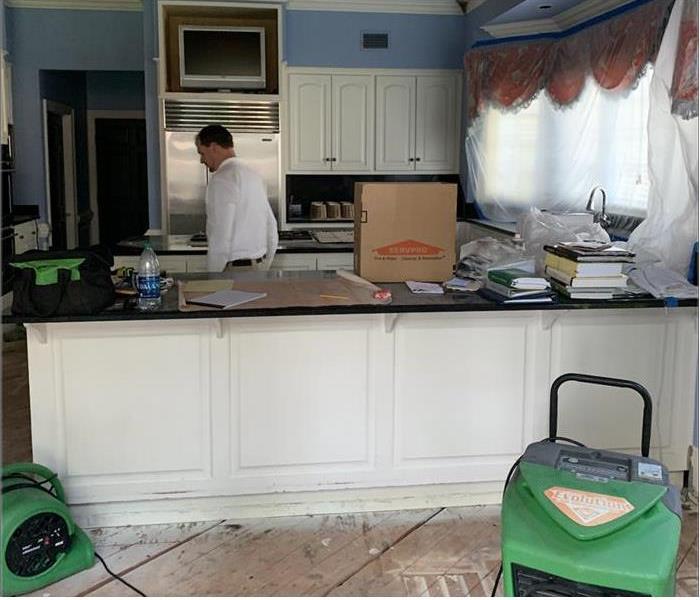 Is water damage present in your home? Call SERVPRO for all your restoration needs. We are always available to take your call and answer your questions
Is water damage present in your home? Call SERVPRO for all your restoration needs. We are always available to take your call and answer your questions
Three Levels Of Contamination In The Water
There are many issues that arise during flooding. Excess water can cause structural damage to your house in Charlotte, NC, and if not dried properly, can invite the growth of mold. Another problem that arises is that, when your home floods, you don’t always know what’s in the water. Contaminated water can be dangerous to both people and pets, and a water restoration specialist can help determine which category of contamination the floodwater falls under.
1. Category 1 – Clean
Clean water is sanitary water that is not a danger to anyone with whom it comes into contact. Water that comes directly from the faucet or from a supply line leak is probably going to be clean water. Flood restoration that involves clean water typically is a matter of merely removing excess water and ensuring that the area is left dry.
2. Category 2 – Contaminated
The second type of water that might be found in a flooded residence is contaminated water. Water in this category might be harmful if ingested. When a toilet containing urine overflows or a dishwasher floods the kitchen, the resulting water is probably in this category.
3. Category 3 – Sewer
The flood water in this category is full of contaminants. It is not safe for humans or animals. Any time the sewer backs up or the house floods because of heavy rains outside, restoration technicians not only have to contend with the water damage but also must make sure the area is cleaned thoroughly.
If your home in Charlotte, NC, floods, you cannot assume the water is clean. An experienced restoration specialist is necessary to test the area and determine whether the house is full of contaminated water. Leaving this task up to the professionals is the best way to ensure the safety of your family and pets.
3 Ways Insurance Agents Can Benefit From Working With a Storm Damage Restoration Service
2/8/2022 (Permalink)
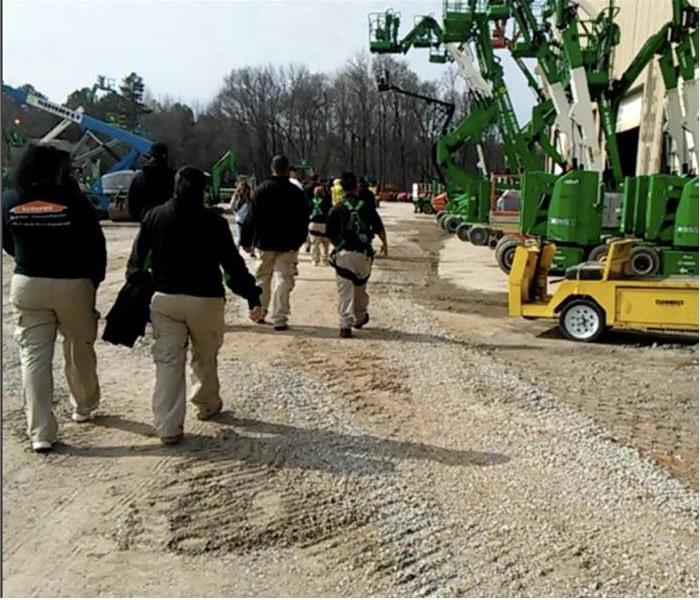 The storm may be moving in your direction, but you have SERVPRO. We are available 24 hours a day to help protect and restore your property.
The storm may be moving in your direction, but you have SERVPRO. We are available 24 hours a day to help protect and restore your property.
Working With A Storm Damage Restoration Service Can Benefit Insurance Agents In Three Ways.
If you are an insurance agent working in Berryhill, NC, you likely have a list of repeat clients who contact you for new services or when they need to file a claim. While this work can be rewarding, you might also find yourself overwhelmed with storm restoration claims when bad weather hits, and it can be time consuming to find services that suit both your needs and those of your clients. Connecting with an expert restoration company before bad weather hits has several benefits, no matter how many clients you serve.
1. You Can Offer a Faster Response
Being able to offer a quick storm response to your clients once their claims are approved can reduce the amount of time it takes to get any damage fixed. From draining away flood waters to performing drywall and carpeting tear out services, having a restoration company on standby for your clients can streamline the process and help you serve them with greater efficiency.
2. You Can Help Multiple Clients Almost Instantly
When multiple customers need storm restoration services, having a contract with a local restoration company allows you to send help right away. For example, if you have several clients who live on the same street and all of their homes were damaged during a flood, you can send your contracted technicians out right away to begin the cleanup process so you can focus on filing claims.
3. You Can Access Damage Information Quickly
When a client’s home suffers from storm or flood damage, it might be difficult for them to tell you specific information about what will need to be repaired. Your contracted storm damage and restoration service may be able to offer you more details about an individual incident once remediation techs inspect the home, which can help you file a claim that same day.
As an insurance agent, you may feel overwhelmed by multiple claims from clients when storm damage occurs in Berryhill, NC. Working with a contracted storm restoration service can allow you to assist customers more efficiently and get help to them when they need it most.
How To Stock Your First Aid Kit
2/1/2022 (Permalink)
How To Put Together A First-Aid Kit
During storm season in West Charlotte, NC, your commercial building and its occupants could be subjected to dangerous elements. Just as you want to put measures in place to protect or storm restoration professionals to repair your building if it gets damaged, you should also have the tools to take care of people who are injured during an emergency. A well-stocked first aid kit is essential to every emergency preparedness plan. Here are some items you want to make sure to include.
1. Wound Coverage
If someone is wounded, you need to be able to dress the wound in some way. That’s where bandages come in. Scrapes and abrasions come in all shapes and sizes, and so should the materials you use to shield them from further harm. Each emergency kit should include:
- Standard adhesive bandages
- Triangular bandages
- Small gauze pads
- Large gauze pads
- One large roll of gauze
2. Wound Cleaners
To prevent infection, your kit should include products that disinfect. Individually wrapped moist towelettes or alcohol pads can suffice. You may also find antibiotic cream helpful in certain situations.
3. Fracture Care
If someone breaks a bone, you need to be able to stabilize it until emergency personnel arrive. Your first aid kit should, therefore, include a splint and something to secure the appendage to the splint, such as tape or elastic bands.
4. CPR Equipment
If someone’s heart stops, someone who is trained in CPR may have to resuscitate him or her. A resuscitation bag or face mask can come in handy.
5. Miscellaneous Items
Every emergency kit should also include scissors, tweezers, latex gloves and a blanket. All of these items can be useful when caring for the people affected by the disaster.
When you don’t know what kind of emergency is going to strike, it is good to be prepared for a wide variety of scenarios. A well-stocked first aid kit is one that can be used to address multiple kinds of injuries.
4 Types of Fire Damage Covered by Commercial Property Policies
1/5/2022 (Permalink)
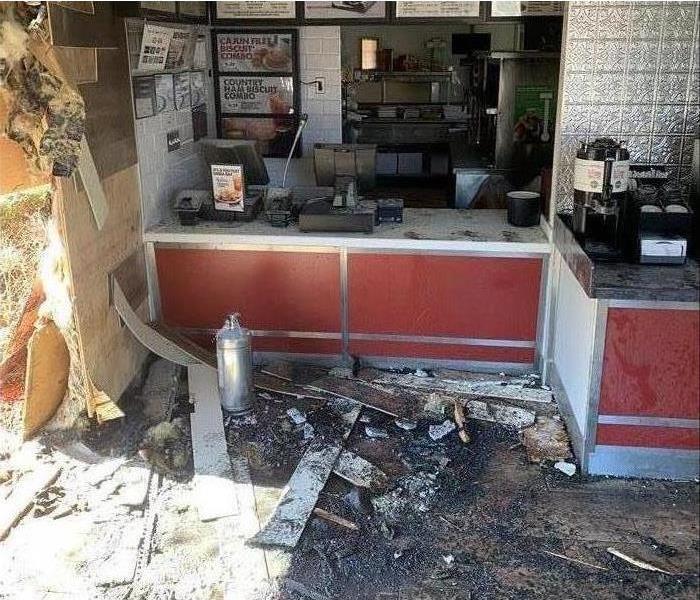 After a fire broke out in this restaurant, there were significant smoke and soot stains. SERVPRO responded immediately to this emergency.
After a fire broke out in this restaurant, there were significant smoke and soot stains. SERVPRO responded immediately to this emergency.
Commercial Property Insurance Policies Cover Four Different Types Of Fire Damage.
Most commercial property policies include coverage for fire. Fire is the fourth most common claim filed by small businesses, and is the third most costly. The average fire damage claim amount is $35,000. Commercial insurance policies should cover most damage caused by a fire. Here are four major types of damage covered by these policies.
1. Building Materials
Fire can char or warp building materials. Combustible materials, such as wood, can be destroyed. Metal or other components may no longer be structurally sound. Porous materials, such as drywall or insulation, can be damaged by heat or exposure to water during fire suppression efforts. Commercial property insurance policies should cover the costs of rebuilding or restoring a structure.
2. Contents
Items in a fire-damaged building may be ruined by exposure to excessive heat or damaged by soot and smoke. Commercial insurance policies should cover the cleaning or replacement of contents. Obtain photographic or video evidence of damage, make a list of items, and provide proof of purchase if possible.
3. Electronics
Electronics are among the contents of commercial properties. These items often call for more specialized restoration methods and may be more expensive to replace than other contents. Most commercial property insurance policies will cover the costs of cleaning or replacement.
4. Smoke Damage
Smoke stains surfaces and contents and can cause a black film to develop on internal electronic components. In addition to restoring or replacing materials or items with smoke damage, a restoration service may also perform odor elimination treatments. Air filtration and the use of ozone machines, thermal foggers, or other methods can get rid of every trace of smoke odor.
Most commercial insurance policies cover these types of fire damage. Make sure your business has adequate coverage. After a fire occurs, provide your insurer with an estimate from a damage mitigation and restoration company in Charlotte, NC.
Readying for Storm Season – Tips for Inspecting Your Building
1/5/2022 (Permalink)
 If your building is flooded you need a professional company that can respond quickly and provide cleanup services efficiently. Contact SERVPRO!
If your building is flooded you need a professional company that can respond quickly and provide cleanup services efficiently. Contact SERVPRO!
Tips For Inspecting Your Building In Advance Of Storm Season
Finding and repairing vulnerabilities in your Berryhill, NC, building before a storm offers the best chance at seeing minimal damage. Fortunately, small things like proper exterior maintenance can dramatically improve your chances of getting through unscathed. Here are tips you can follow for inspecting your building before a storm hits.
Understand the Risks
Each storm brings its own unique threats. Some of the most common threats of all storms include:
- High winds
- Hail
- Power loss
While you can’t eliminate all risk, preparing with basic exterior maintenance can minimize some of the impact. The tips below can help you keep your building maintained and know what to look for as you prepare for storm season.
Secure Loose Objects
Wind is one of the biggest risks during any storm. As you examine your building exterior, look for loose shutters, fences, doors and even windows. Any of these can break off, creating dangerous projectiles during a storm. Secure these with locks, window shutters or plywood.
Monitor Hanging Icicles
Icicles may seem attractive, but they’re typically a sign of a poorly insulated roof. Too much heat in the attic can melt snow, leading to water runoff into gutters. The liquid refreezes and creates a dam of ice that can collapse. Inspect your roof eaves for icicles and target those areas for an interior roof inspection and possible repairs.
Clear Unsafe Tree Limbs
Trees can be a major threat to your building in a storm. Inspect your building’s exterior for overgrown branches as well as trees with shallow, rotting roots. Prepare to have branches trimmed or vulnerable trees removed to prevent damage to your roof or windows in a storm.
One of the best ways to get your building through a storm safely is by preparing in advance. Take time to do basic exterior maintenance and building inspection to minimize the need for storm damage cleanup and expense.
How to Keep Water Away While You’re Out of Town
1/5/2022 (Permalink)
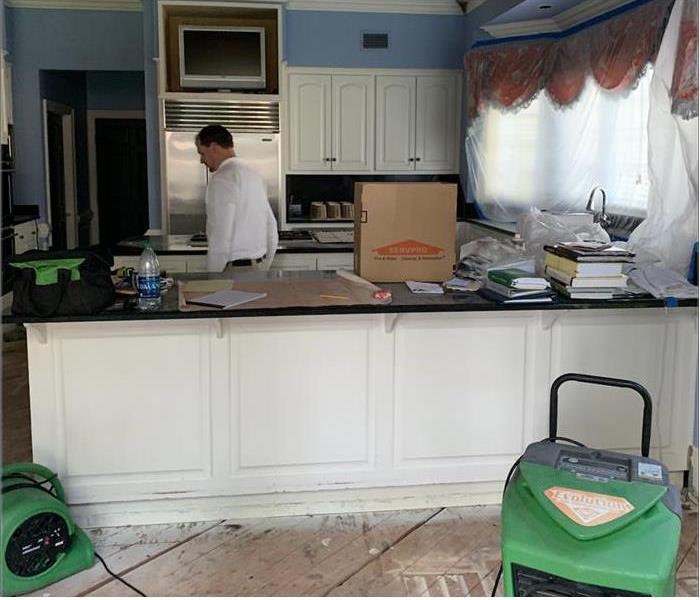 Water pipe repair needs, poor rain gutters, plumbing leaks, and other issues can invite flooding to your home. Call SERVPRO, we can help you!
Water pipe repair needs, poor rain gutters, plumbing leaks, and other issues can invite flooding to your home. Call SERVPRO, we can help you!
How To Keep Water Out Of Your Home While You're Away
Everyone needs some rest and relaxation from time to time. A vacation is an ideal way for hard-working people to get away from the stress of work and everyday life. Imagine the horror of returning home to find a flood and needing water pipe repair in your West Charlotte, NC, house. This disaster could quickly ruin any enjoyment your vacation just provided. Fortunately, there are some effective steps you can take to help ensure you keep water at bay while you’re gone.
What You Can Do
Don’t wait for a flooded basement to prompt you to take action. Don’t let this mishap cause you heartache and take up your time and money. Make sure you put these items on your flood-prevention checklist:
- Ask someone to watch over your home while you’re gone.
- Turn off the water to your home.
- Check for leaks before you leave.
- Clean the gutters.
Let a Neighbor Help
If you plan to head out of town for several days, it’s a good idea to ask a trusted neighbor or family member to keep an eye on your home. This way, if there is a broken pipe or other cause of flooding, the person can catch it quickly and notify you so you can contact a professional cleanup crew.
Shut Off the Main Water
If no one is available to help, find the main shutoff valve to your home’s water supply. You should also drain the pipes as well.
Check for Any Leaks
Do a quick run-through in your home and inspect the faucets and pipes. If you detect that you need water pipe repair, address that before you leave.
Clean the Rain Gutters
If a large storm hits the area while you’re on vacation, clogged rain gutters and downspouts could collect water and send it through the foundation of your home. Make sure these areas are clear and free of debris.
Water pipe repair needs, poor rain gutters, plumbing leaks and other issues can invite flooding. Don’t leave home for a trip until you’re sure these issues aren’t present.




 24/7 Emergency Service
24/7 Emergency Service














